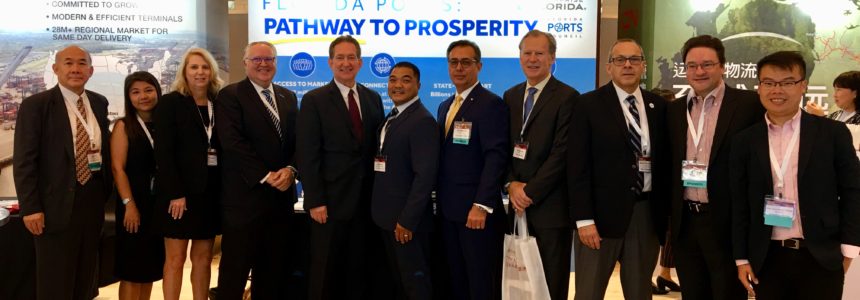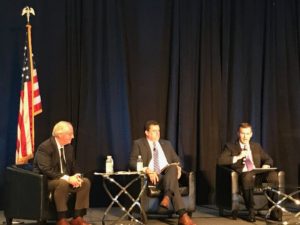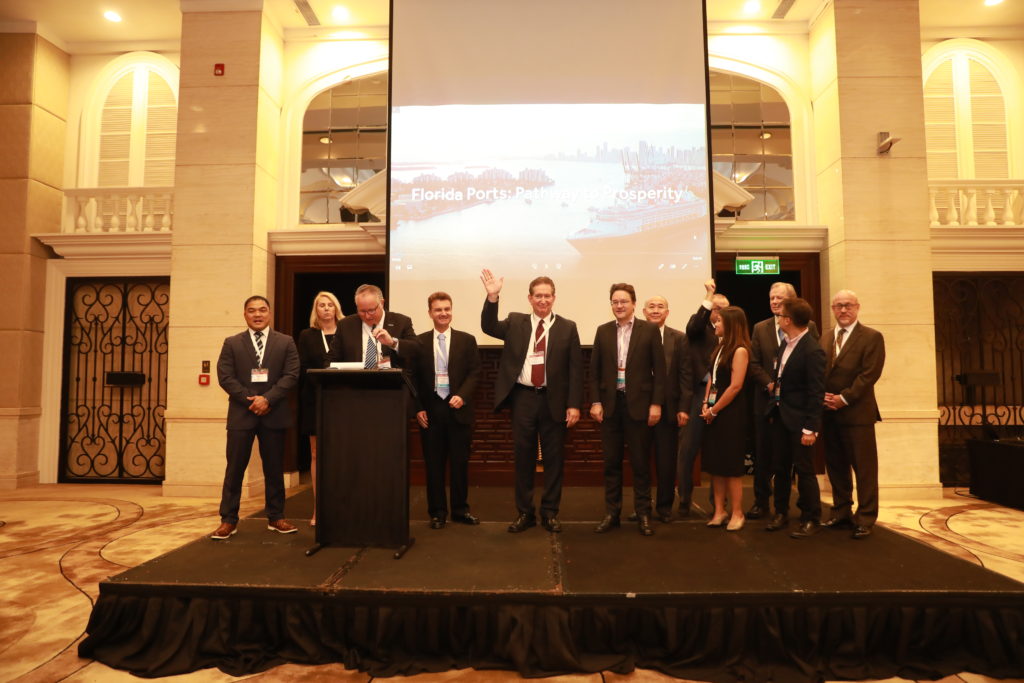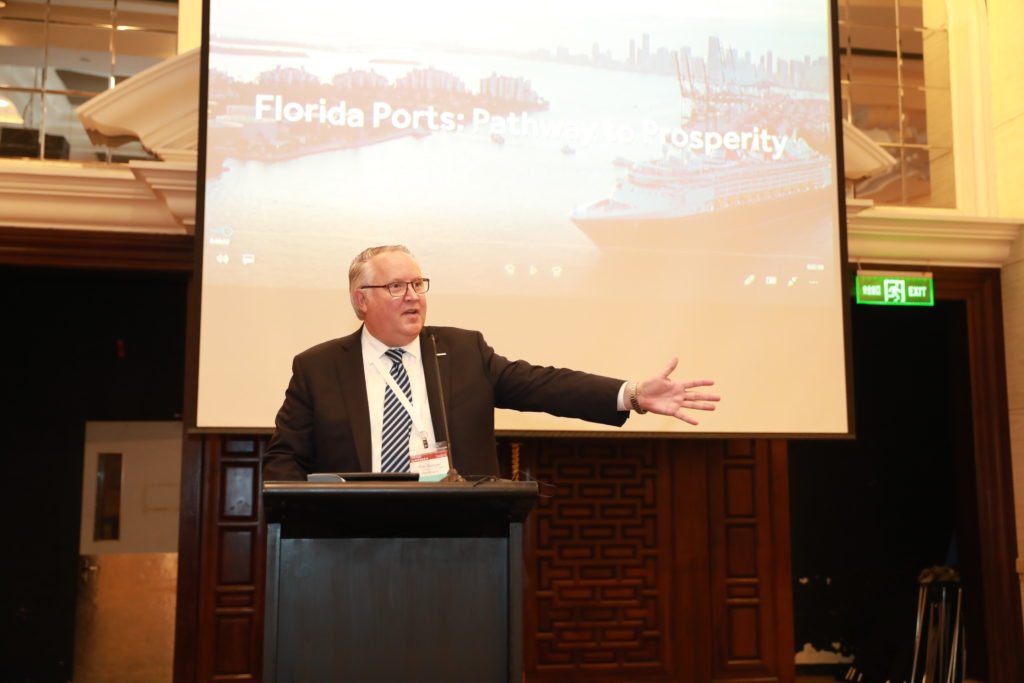News & Updates
Florida seaports on the road

In the month of October, Florida’s seaports have been well represented at industry events in the U.S. and abroad.
TPM Asia
Representatives from Enterprise Florida (EFI), JAXPORT, PortMiami, Port Everglades, and Port Tampa Bay traveled to Shenzhen, China in early October to attend the 2019 TPM Asia Conference. The group was also a sponsor of the event and had the opportunity to present the Florida Ports Council’s new container cargo video to conference attendees at a luncheon. Participating ports and EFI succeeded in their efforts to maximize Florida’s collective presence at the conference, and to convey advantages of trade through Florida’s ports including access to the state’s massive consumer base of residents and visitors, cost-saving transport to other American markets using the all-water route and state-of-the-art infrastructure to assist in the seamless, multi-modal transfer of cargo.
“Asia is one of our state’s top trading partners, but there is still an opportunity to expand trade and investment relationships,” said Doug Wheeler, president and CEO of the Florida Ports Council. “There’s an abundance of mutually-beneficial market prospects in Asia, and we are excited for our partners and ports participating on this trip to connect with these opportunities.”
AAPA Annual Convention
 The AAPA Annual Convention took place October 13th through 16th in Norfolk, Virginia. The convention included technical and policy committee meetings, a “Revolutionary Challenge” in the exhibit hall, and business sessions and social events geared toward sharing information on key issues facing ports and expand business contacts.
The AAPA Annual Convention took place October 13th through 16th in Norfolk, Virginia. The convention included technical and policy committee meetings, a “Revolutionary Challenge” in the exhibit hall, and business sessions and social events geared toward sharing information on key issues facing ports and expand business contacts.
Doug Wheeler sat on the general session panel, Outside the Gate Fluidity, along with our partners at FDOT.
When cargo leaves the footprint of a port, its journey is just beginning. While bottlenecks on first- and last-mile road segments may not be under the direct control of port authorities, ports have a vested interest in ensuring that road and rail connections can handle the volume of goods entering or exiting ports during peak shipment times.
Speaking to this topic, Mr. Wheeler was able to point to several projects funded in part with FSTED contributions that assist in first- and last-mile connectivity, including the tunnel at PortMiami that provides direct access to and from the interstate to the port without clogging up downtown street or stopping at traffic lights, and the Port Tampa Bay truck only ramp, which keeps trucks from rumbling through charming streets of Ybor City and also allows them to access the interstate system with no traffic signals.
Rail is another component in addressing first and last mile issues. While mostly addressing capacity, it also helps removes congestion on roads in and out of the port. At JAXPORT, the Talleyrand Marine Terminal Development & Expansion provides direct switching service for Norfolk Southern and CSX rail lines and has improved capacity at the Port.
Port Manatee rail improvements for an on-port track rebuild in partnership with FDOT connects the Port’s short line railroad directly with the CSX mainline, which is less than 1 mile from the port’s north gate.
And at Port Everglades, the ICTF in partnership with Florida East Coast Rail is another example of being able to increase capacity while addressing connectivity. This project has grown with the increased cargo, while allowing for more fluid truck movements around other cargos, like fuel, which sees about 1,200 truck movements a day.


